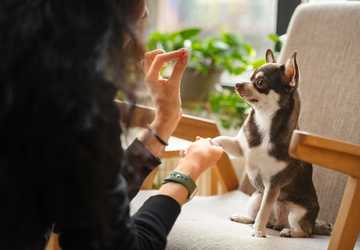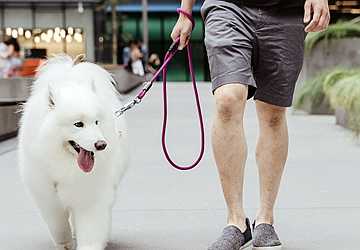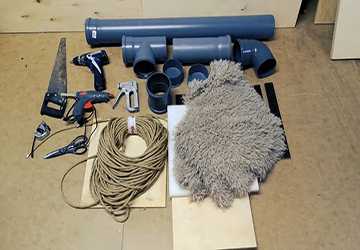How to Safely Introduce Your Dog to a New Cat
Understanding Animal Instincts: The Foundation for Safe Pet Introductions
Before you start the process of introducing a dog to a cat, it’s crucial to understand the instincts of both animals. Dogs often have a prey drive that might make them want to chase smaller animals like cats. To facilitate dog and cat coexistence, you must be mindful of these instincts and take things slow, considering each animal’s comfort level at every stage of the introduction.

Pre-Introduction Phase: Setting the Stage for Safe Pet Introductions
Preparation plays a critical role in safe pet introductions. Prior to introducing your dog to your cat, it's advisable to designate separate areas for each pet with their food, water, and bedding. This allows each pet to become accustomed to its new surroundings independently. This step sets the foundation for a more peaceful initial meeting and long-term dog and cat coexistence.
The First Meeting: Taking Baby Steps in Introducing Dog to Cat
When the time comes for the first meeting, it’s important to control the environment to make safe pet introductions. Keep your dog on a leash and let the cat come and go as it pleases. Choose a neutral territory that neither considers its own, perhaps allow the two to see each other from a distance and gauge their reactions. If there's hissing, growling, or excessive agitation, it's a sign that you may need to take more time during the pre-introduction phase. However, indifference or mild curiosity can usually be taken as a good sign in the path toward dog and cat coexistence.
Emotional Readiness: A Psychological Perspective on Safe Pet Introductions
Before introducing a dog to a cat, assessing the emotional readiness of both pets is crucial. Some dogs have a more relaxed temperament and can adjust to new situations more easily, while others may be anxious or excitable. The same applies to cats; some may be social and curious, while others may be shy or aggressive. A psychological evaluation, through observations or even professional advice, can provide vital clues on how to go about safe pet introductions. Understanding your pets' psychological dispositions can be a cornerstone in achieving a peaceful dog and cat coexistence.
The Role of Human Interactions: Your Behavior Affects Their Behavior
During the introduction process, the human family members play an active role in safe pet introductions. It's essential to remain calm and positive, as pets can pick up on human emotions. If you're anxious, the pets are more likely to be nervous as well. During the introduction, use a calm and reassuring tone of voice, and avoid sudden movements that might startle either animal. Your composed demeanor can contribute to a more effective introduction of a dog to a cat and pave the way for harmonious dog and cat coexistence.
Diet and Feeding Schedules: An Often-Overlooked Aspect of Dog and Cat Coexistence
Believe it or not, the diet and feeding schedules can have an impact on safe pet introductions. Feeding the pets at the same time but in separate areas can help ease tension and create a sense of routine that both animals can rely on. This simultaneous feeding might reduce territorial aggressiveness over food and contribute to dog and cat coexistence. Eventually, they may feel comfortable enough to eat in closer proximity, under supervision, of course.
Health Check-Ups: Medical Clearance Before Introducing Dog to Cat
Before introducing a dog to a cat, it's advisable to have both animals checked by a veterinarian. This ensures that neither is carrying any diseases that could be transmitted to the other. This is particularly important if one of the pets is new to the household. A clean bill of health can set the stage for safe pet introductions and reduce future complications that could strain the dog and cat coexistence.
Gradual Integration: The Long Road to Dog and Cat Coexistence

Achieving lasting dog and cat coexistence is often a long-term project that requires ongoing effort. Even after the initial introductions have gone well, keep observing the animals for any signs of stress or discomfort. If any issues arise, be prepared to take a step back and give each animal its space before attempting another introduction. The key to safe pet introductions is not to rush the process and to be prepared for setbacks. With patience, consistent efforts, and careful monitoring, most dogs and cats can learn to live together in harmony.
Monitoring and Supervision: Key Components for Dog and Cat Coexistence
Even if the initial introduction goes well, continuous monitoring is essential to ensure safe pet introductions and harmonious dog and cat coexistence in the long run. Never leave the two animals alone together until you're certain that they're comfortable with each other. This could take weeks or even months. Always look out for signs of stress or anxiety in either pet, such as hiding, aggressive behavior, or changes in eating habits. Addressing these signs early can prevent potential conflicts and ensure a more harmonious household.
Training and Behavioral Adjustment: Further Steps in Dog and Cat Coexistence
For safe pet introductions to lead to peaceful dog and cat coexistence, both pets may require some behavioral adjustments. Training your dog to follow commands like 'leave it' or 'stay' can be particularly useful in controlling his actions around the cat. Meanwhile, providing the cat with elevated spaces like shelves or cat trees where it can observe the dog from a safe distance can help it feel more secure.
In conclusion, the journey of introducing a dog to a cat requires patience, planning, and constant supervision to ensure safe pet introductions. While the task may seem daunting, the reward is a peaceful home where dogs and cats coexist, each with their unique personalities and behaviors, adding richness to your life. By following these guidelines, you are setting the stage for a respectful and loving relationship between your dog and your new feline friend.




